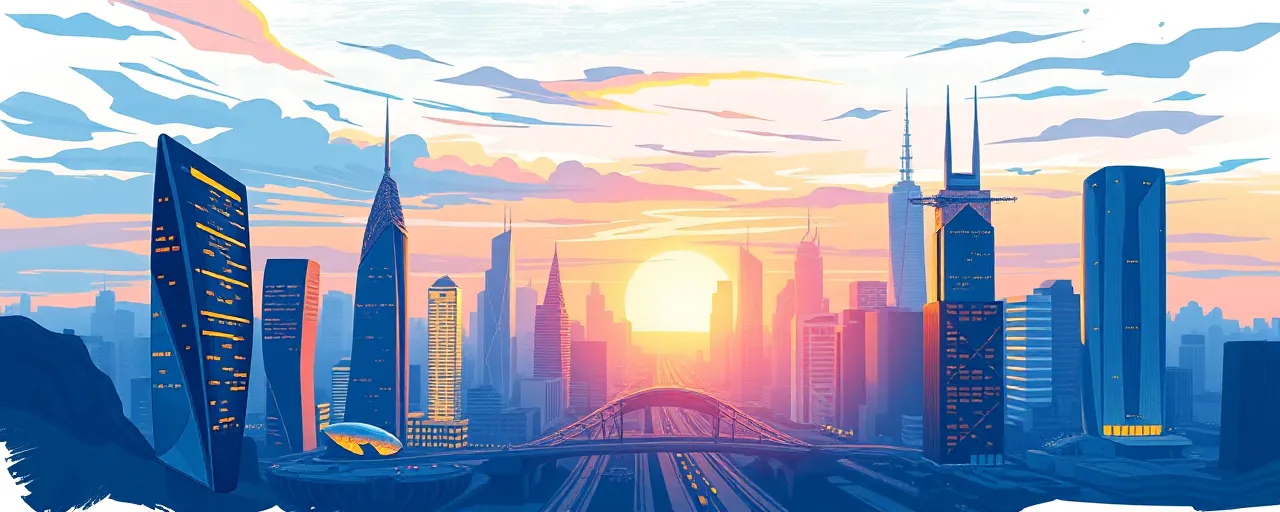A Push for Progress
The United States stands at a crossroads, grappling with how to reclaim its legacy as a global pioneer in technology. Decades ago, American ingenuity launched astronauts to the moon and connected the world through the internet. Today, leaders in Washington are calling for a renewed focus on innovation to tackle modern challenges, from energy shortages to international competition.
At the heart of this effort is a belief that science and industry can drive economic growth and improve lives. Yet questions linger about whether the nation can overcome hurdles like complex regulations and a fragmented workforce to achieve these ambitious goals. The stakes are high, with ripple effects for jobs, security, and global influence.
Recent speeches from top officials highlight a vision of America leading in fields like artificial intelligence, biotechnology, and clean energy. They argue that strategic investments and policy changes can unlock a wave of breakthroughs. But not everyone agrees on the best path forward, sparking debates about priorities and trade-offs.
For everyday people, the outcome matters beyond abstract ideals. It’s about cheaper electricity, faster transportation, or better healthcare. The challenge lies in turning rhetoric into results that people can feel in their daily lives.
Looking Back to Move Forward
The 20th century saw America transform the world with inventions like the airplane, nuclear power, and the personal computer. These leaps came from a mix of bold ideas, hefty funding, and a willingness to take risks. By the 1970s, the nation celebrated moon landings and dreamed of limitless energy.
Fast forward to 2025, and the pace feels different. While smartphones and AI assistants are now part of daily life, big-ticket advancements like high-speed rail or new nuclear plants remain elusive. Experts point to multiple reasons: tougher technical problems, cautious regulations, and a shift toward incremental gains over moonshot projects.
Some argue the system has grown too comfortable with small steps. Building a nuclear reactor today can take decades, tangled in red tape and legal battles. Meanwhile, other nations race ahead with faster trains and smarter grids. The contrast fuels calls for a shake-up in how America approaches innovation.
Still, not everyone sees stagnation. Advances in gene editing and renewable energy show progress, even if it’s less flashy. The question is whether these efforts can scale up to match the transformative impact of past eras.
Money, Rules, and Rivalry
Funding is a big piece of the puzzle. The U.S. has poured billions into semiconductors, AI, and quantum computing through laws like the CHIPS and Science Act. These dollars aim to boost research, train workers, and build factories at home. Supporters say it’s a smart bet to stay ahead of rivals like China, which is ramping up its own tech investments.
Regulations, though, are a sticking point. Some business leaders argue that rules meant to protect safety or the environment now slow progress to a crawl. For example, clean energy projects often face years of reviews before breaking ground. Others counter that these safeguards prevent harm and ensure fairness, citing past disasters tied to lax oversight.
Global competition adds urgency. Nations are vying to set standards for AI and secure supply chains for critical tech like microchips. The U.S. is tightening export controls to keep sensitive tools out of adversaries’ hands, while also courting allies to invest in American innovation. This balancing act aims to protect national interests without stifling global collaboration.
Immigration plays a role, too. Skilled workers from abroad have long fueled U.S. breakthroughs, from Silicon Valley to biotech labs. Yet debates over visa policies persist, with some pushing for tighter borders and others warning that talent shortages could hamstring growth. Finding common ground remains tricky.
What’s at Stake
For the average person, the push for innovation isn’t just about bragging rights. It’s about whether energy bills drop, commutes get faster, or medicines become more affordable. A stronger tech sector could mean more jobs and a sturdier economy, but only if the benefits spread beyond a few elite hubs.
There’s also a deeper question of identity. America has long seen itself as a land of builders and dreamers. Falling behind in technology could dent that confidence, while leading the pack might restore a sense of purpose. The path chosen now will shape how future generations view this moment.
No one expects easy answers. Policymakers, scientists, and citizens face tough decisions about where to invest, how to regulate, and who gets a say. The hope is that by wrestling with these choices, the nation can find a way to spark progress that lifts everyone up.
